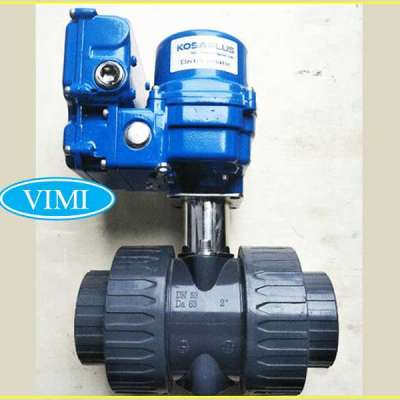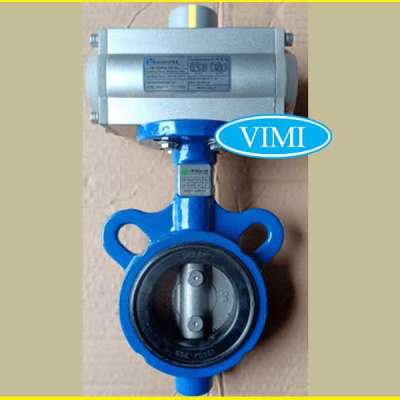Eco-Friendly Construction Chemicals: Are Indian Builders Ready?
𝐌𝐚𝐤𝐞 𝐈𝐧𝐟𝐨𝐫𝐦𝐞𝐝 𝐃𝐞𝐜𝐢𝐬𝐢𝐨𝐧𝐬 – 𝐀𝐜𝐜𝐞𝐬𝐬 𝐘𝐨𝐮𝐫 𝐒𝐚𝐦𝐩𝐥𝐞 𝐑𝐞𝐩𝐨𝐫𝐭 𝐈𝐧𝐬𝐭𝐚𝐧𝐭𝐥𝐲! https://www.futuremarketinsigh....ts.com/reports/sampl
India’s construction chemical market has witnessed rapid expansion, fueled by robust infrastructure development, government-led housing schemes, and the rise of green building norms. According to the latest India construction chemical market report, the sector is poised to grow at a CAGR of over 13% through the end of the decade, with major demand arising from waterproofing solutions, concrete admixtures, and repair chemicals. While traditional market analyses focus on macro-level factors such as urbanization and industrial growth, an often-overlooked dimension lies beneath the surface—both literally and figuratively.
In India’s geographically diverse landscape, regional building substrates and microclimatic variables play a critical role in determining the long-term performance of construction chemicals. From curing efficiency to adhesion properties, these subtleties are reshaping product development strategies and procurement decisions. Stakeholders who fail to factor in these regional dynamics risk underperformance, increased maintenance costs, and reduced lifecycle value of infrastructure investments.
𝐒𝐮𝐛𝐬𝐭𝐫𝐚𝐭𝐞 𝐂𝐡𝐞𝐦𝐢𝐬𝐭𝐫𝐲 𝐚𝐧𝐝 𝐑𝐞𝐠𝐢𝐨𝐧𝐚𝐥 𝐁𝐮𝐢𝐥𝐝𝐢𝐧𝐠 𝐌𝐚𝐭𝐞𝐫𝐢𝐚𝐥𝐬
Across India, regional building practices and material choices vary significantly. In northern states like Uttar Pradesh and Haryana, fly ash bricks—encouraged by sustainability policies—are now widely used in large-scale residential and industrial construction. These bricks, while environmentally preferable, possess different porosity and chemical composition compared to traditional fired clay bricks. Such differences impact the interaction between bricks and surface treatments like waterproofing membranes, plasters, or bonding agents.
In contrast, states such as Kerala and Goa often utilize laterite stones due to local availability, while the northeastern states rely more on timber-frame structures and composite masonry. These variations have profound implications on the performance of chemical admixtures and coatings. For example, cementitious waterproofing agents often underperform when applied directly over high-silica-content substrates without primer treatments. Manufacturers that tailor their products to regional substrate profiles are therefore gaining trust and expanding their share in niche local markets.
This deeper understanding of substrate compatibility is leading to a shift from “one-size-fits-all” solutions to bespoke formulations, especially in sectors like smart city construction, where durability and performance are non-negotiable. In essence, the substrate is no longer just a surface—it’s a performance variable that directly influences chemical efficacy.
𝐌𝐢𝐜𝐫𝐨𝐜𝐥𝐢𝐦𝐚𝐭𝐢𝐜 𝐈𝐧𝐟𝐥𝐮𝐞𝐧𝐜𝐞𝐬 𝐨𝐧 𝐏𝐫𝐨𝐝𝐮𝐜𝐭 𝐏𝐞𝐫𝐟𝐨𝐫𝐦𝐚𝐧𝐜𝐞
India’s climatic zones—ranging from the arid landscapes of Rajasthan to the humid coastlines of Tamil Nadu—pose varying challenges for construction chemical performance. Curing time, moisture sensitivity, and thermal expansion properties of construction additives and sealants can behave unpredictably if not matched with local weather conditions.
In coastal Chennai, for example, high humidity levels reduce the evaporation rate of water-based coatings, potentially delaying curing and weakening adhesion if not properly managed. In contrast, in Ahmedabad’s dry climate, rapid evaporation can lead to early setting in concrete treated with standard admixtures, resulting in surface cracking. Companies that adapt to these realities by modifying chemical dosage, formulation, and even packaging are not just improving product reliability—they are redefining performance benchmarks.
Field studies in Nagpur, where daytime temperatures can exceed 45°C, have shown that epoxy-based flooring compounds tend to lose viscosity rapidly during application, affecting the uniformity of the finish. Recognizing this, some manufacturers have introduced heat-resistant variants with stabilizers that improve handling and application quality. Such examples highlight how microclimatic insights are influencing product lines and shifting customer preferences toward region-specific construction material innovation in India.
𝐔𝐧𝐥𝐨𝐜𝐤 𝐂𝐨𝐦𝐩𝐫𝐞𝐡𝐞𝐧𝐬𝐢𝐯𝐞 𝐌𝐚𝐫𝐤𝐞𝐭 𝐈𝐧𝐬𝐢𝐠𝐡𝐭𝐬 – 𝐄𝐱𝐩𝐥𝐨𝐫𝐞 𝐭𝐡𝐞 𝐅𝐮𝐥𝐥 𝐑𝐞𝐩𝐨𝐫𝐭 𝐍𝐨𝐰: https://www.futuremarketinsigh....ts.com/reports/india
𝐂𝐚𝐬𝐞 𝐒𝐭𝐮𝐝𝐲: 𝐀𝐝𝐚𝐩𝐭𝐢𝐯𝐞 𝐏𝐫𝐨𝐝𝐮𝐜𝐭 𝐒𝐭𝐫𝐚𝐭𝐞𝐠𝐲 𝐢𝐧 𝐖𝐞𝐬𝐭𝐞𝐫𝐧 𝐈𝐧𝐝𝐢𝐚
A regional construction chemical firm based in Pune encountered declining customer satisfaction due to inconsistent results in waterproofing applications for housing projects in Maharashtra’s Konkan belt. After investigating the issue, the company discovered that standard waterproofing emulsions were reacting poorly with the high-moisture laterite stones common in the area. Moreover, frequent monsoons further weakened the bond between the coating and the substrate.
Instead of increasing marketing expenditure or offering discounts, the firm re-engineered its product to include an alkali-resistant primer system and adjusted the polymer content to suit the porous stone. Within 18 months, project rework rates dropped by 40%, and the product became the regional market leader in its category. The strategic shift not only protected the company’s reputation but also expanded its footprint among local contractors and public sector buyers. This case demonstrates how technical adaptation—rather than price wars—can drive growth in India’s diverse construction ecosystem.
𝐑𝐞𝐠𝐮𝐥𝐚𝐭𝐨𝐫𝐲 𝐓𝐫𝐞𝐧𝐝𝐬 𝐚𝐧𝐝 𝐃𝐮𝐫𝐚𝐛𝐢𝐥𝐢𝐭𝐲 𝐒𝐭𝐚𝐧𝐝𝐚𝐫𝐝𝐬
India’s regulatory landscape is also starting to favor performance-based construction chemical selection. Recent updates in Bureau of Indian Standards (BIS) codes, along with green building certifications such as GRIHA and IGBC, are placing more emphasis on lifecycle performance, VOC emissions, and climate adaptability. As these frameworks mature, they are compelling manufacturers to demonstrate the contextual relevance of their products.
For instance, upcoming infrastructure projects under the Smart Cities Mission now require compliance with guidelines on climate-resilient materials. This has encouraged larger players to develop climate-mapped product portfolios, further accelerating the shift from generic to engineered construction chemicals. As performance additives in cement and admixtures become more tailored to location-specific needs, downstream demand is aligning more closely with regional application trends than national averages.
𝐒𝐮𝐬𝐭𝐚𝐢𝐧𝐚𝐛𝐢𝐥𝐢𝐭𝐲, 𝐋𝐨𝐜𝐚𝐥𝐢𝐳𝐚𝐭𝐢𝐨𝐧, 𝐚𝐧𝐝 𝐭𝐡𝐞 𝐏𝐚𝐭𝐡 𝐅𝐨𝐫𝐰𝐚𝐫𝐝
In a market where import substitution and local manufacturing are gaining momentum under initiatives like “Make in India,” localization is no longer just about plant location—it is about chemical composition, packaging resilience, and climate suitability. Indian companies are increasingly investing in R&D centers focused on regional testing to ensure that smart construction chemicals perform uniformly across varied geographies.
Sustainability is also driving product innovation. Low-VOC additives, bio-based retarders, and recyclable packaging materials are becoming preferred choices for environmentally conscious developers. These green materials often need to be engineered differently depending on regional constraints, including water scarcity or soil salinity, which affects both application and shelf life.
𝐒𝐩𝐞𝐜𝐢𝐚𝐥𝐭𝐲 𝐂𝐡𝐞𝐦𝐢𝐜𝐚𝐥𝐬 𝐈𝐧𝐝𝐮𝐬𝐭𝐫𝐲 𝐀𝐧𝐚𝐥𝐲𝐬𝐢𝐬: https://www.futuremarketinsigh....ts.com/industry-anal
𝐑𝐞𝐢𝐦𝐚𝐠𝐢𝐧𝐢𝐧𝐠 𝐌𝐚𝐫𝐤𝐞𝐭 𝐋𝐞𝐚𝐝𝐞𝐫𝐬𝐡𝐢𝐩 𝐓𝐡𝐫𝐨𝐮𝐠𝐡 𝐂𝐨𝐧𝐭𝐞𝐱𝐭𝐮𝐚𝐥 𝐈𝐧𝐧𝐨𝐯𝐚𝐭𝐢𝐨𝐧
The India construction chemical market is entering a phase where success hinges not just on cost efficiency or supply chain agility, but on scientific adaptability. Substrate compatibility and microclimatic resilience—long treated as peripheral concerns—are now central to product selection and performance validation.
Manufacturers and investors who recognize these hidden drivers will not only differentiate themselves but also shape the next generation of sustainable and regionally optimized infrastructure in India. The future of construction chemicals lies in their ability to perform contextually—and those who build with this vision will lead from the ground up.
Gusto
Magkomento
Ibahagi
















